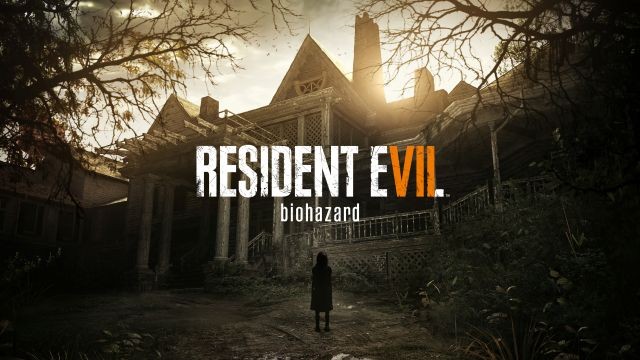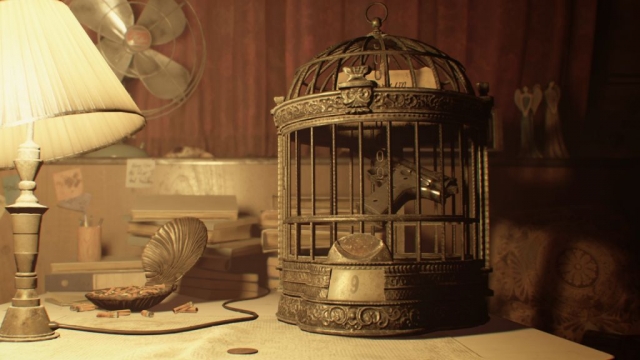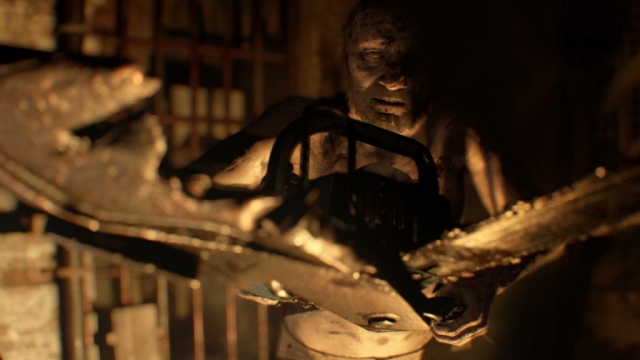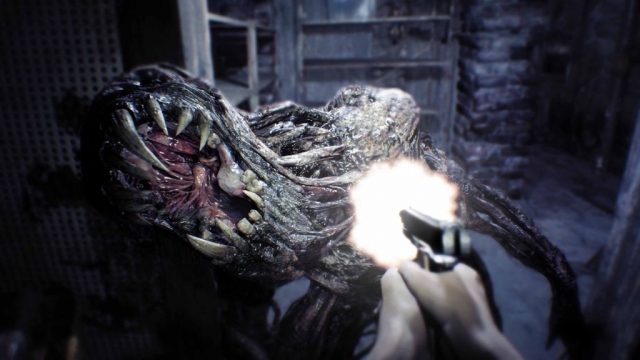Resident Evil 7: Biohazard

(Note: I didn’t play this with VR at all.)
Resident Evil 7 is something of an experiment. I don’t think it’s an entirely successful one, but it’s got a lot going for it, not least of which is a surprisingly faithful modern recreation of how the earliest Resident Evil games tended to feel.
There’s a real sense of place to the Baker mansion in RE7. It’s grimy and often claustrophobic, sometimes seething with a black mold that looks like a blatant metaphor for corruption. Like the Spencer mansion from the original game, it’s full of discordant puzzles, themed locks, bizarre secrets, and its own twisted logic; of course this is a place where dead animals keep doors shut, or where you feed old coins into a bird cage to access a revolver. It’s dusty, cluttered, and often disgusting, like old, cheap Italian horror movies, and the sense of oppression it creates is hard to shake.
It’s all the more disappointing, then, when you leave. You spend the last third of RE7’s relatively short running time in much less inspired environments, dealing with much less memorable opponents. Its greatest asset is the mansion, and it’d be a better experience if it’d found an excuse to keep you there.
Resident Evil 7, despite how it might initially appear, is a canon entry in the RE series, albeit one that’s only tentatively connected to the events of past games. Set in July of 2017, four years after the events of RE6, it follows Ethan Winters, who drives out to an isolated corner of Louisiana to find his missing wife Mia. She’s sent him an email telling him where she is, which is the only real clue he’s gotten about her in three years.
What he finds is the Bakers’ farm, which has been abandoned for years, and as Ethan soon finds out, has been the site of several recent murders. The nearest town thinks the Bakers disappeared three years ago, just like Mia, but they’re still here, and they’ve picked up some unwholesome habits. Worse, their house is infested with more monsters than just the Bakers.
At first glance, or if you play the demo, RE7 looks like Outlast or Amnesia: games where your only option against any threat is to run away. That only describes the game’s opening hour or so, however, and the further you get into it, the more weapons you accumulate and the more Resident Evil it gets. The series made its bones about being alone in a creepy mansion with three bullets, a sliver of health, no idea what’s happening, an inventory full of random quest items, and scared to open the next door, and that’s what RE7 is all about. At its best, it feels like a modern rebirth of everything that made survival horror take off in the ’90s, most of which sloughed away as the genre evolved.
That includes a certain amount of deliberate awkwardness in its controls. Ethan is supposed to be an ordinary person using badly-maintained weaponry, as opposed to the series’ typical well-armed soldiers or cops. Ethan’s aim isn’t great, he moves irritatingly slowly (there’s not much of a difference between his walk and his sprint), and the game is built around requiring an amount of precision that the engine can’t provide. You really want to land as many headshots as possible in RE7, if only for pure ammo efficiency, and the game makes it as hard as it can. I’d go so far as to say that if you aren’t playing this in VR, try to play it with a mouse. (Or just blow everything in half with a shotgun, like I did.)
Yet, for all of that, the game has every bit of the atmosphere it needed. I’ve been playing horror-flavored action games for so long at this point that I’d almost forgotten what real survival horror felt like, and once RE7 hits its stride, this is it: intense, immersive, and most importantly, like being suddenly flung into a place where normal rules don’t apply. That sense of isolation is absolutely key, and it’s too often forgotten.
As I noted above, though, that doesn’t last. As you progress through the game, you eventually leave the Bakers’ property, and that’s where the game trips up. The later locations simply lack the atmosphere and design of the house, and while it isn’t a deal-breaker for me, it’s a shame. With another couple of development passes on the last third of the game, this could have been an all-time classic.
As it is, it’s merely very good. The Resident Evil series in general has been clawing its way back to the light ever since the unfortunate misfire of Resident Evil 6 (which was more or less a failure, but was at least an interesting one), and this is the strongest game in the series since RE5. It’s an experiment by Capcom, and in large part, it paid off.
The last real criticism you can make about RE7 is its length. A single run through the game on normal difficulty will probably take you seven to ten hours. There are incentives for replaying it, and the unlockable Madhouse difficulty reshuffles the locations of all the items, but you’re still looking at full retail price for a ten-hour game. There’s free DLC coming in a few months that will add another chapter to the game’s story, which is teased after the credits roll, but for right now, out of the box, RE7 is a bit value-light. It could use something like the old games’ Raid or Mercenaries modes to extend its playtime, or at the very least, the ability to skip cutscenes on subsequent runs through the story.
Resident Evil 7 is definitely worth your time, but unless you’re looking to go all in, it’s probably best as a rental. It’s a strong start for Capcom’s year, and it’s proof that there’s still a lot of life left in both this franchise and in the company. With a little more care shown towards its endgame and a few extra modes for longevity, another game like this one could be an all-time classic.
Reviewed By: Thomas Wilde
Publisher: Capcom
Rating: 85%
——————————————————————————–
This review is based on a digital copy of Resident Evil 7: Biohazard for the PlayStation 4 provided by Capcom.
 Game Over Online
Game Over Online







